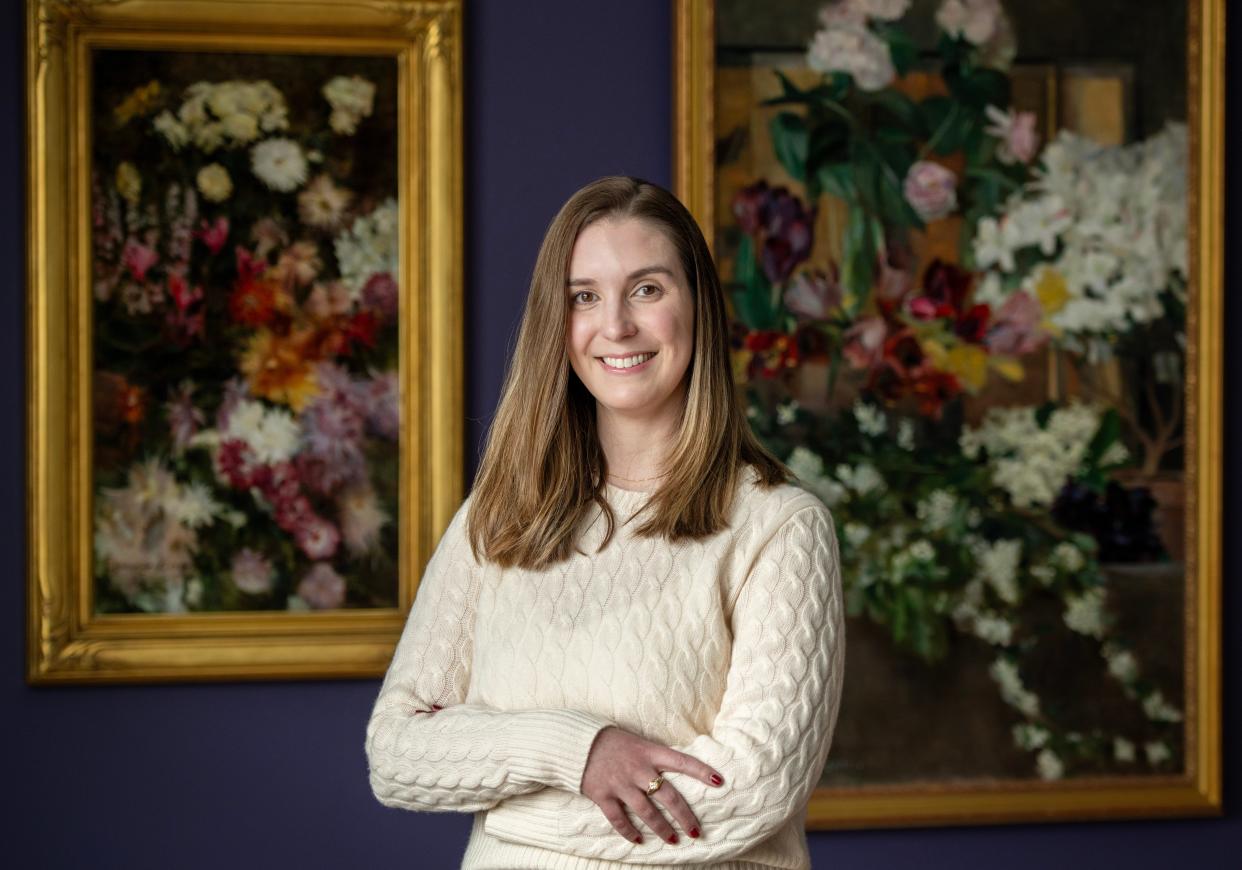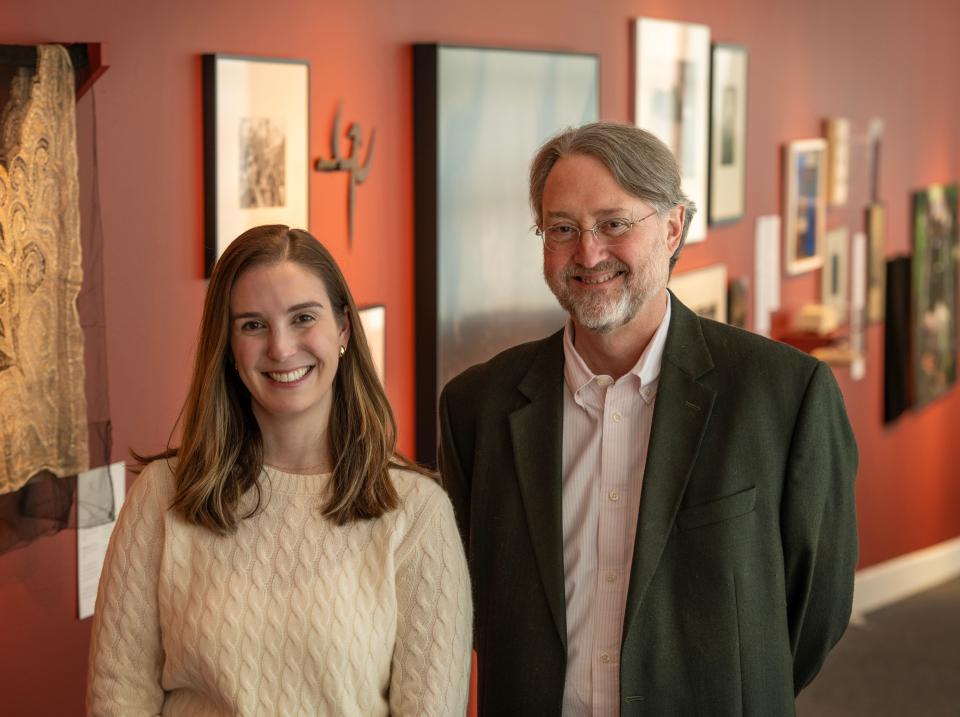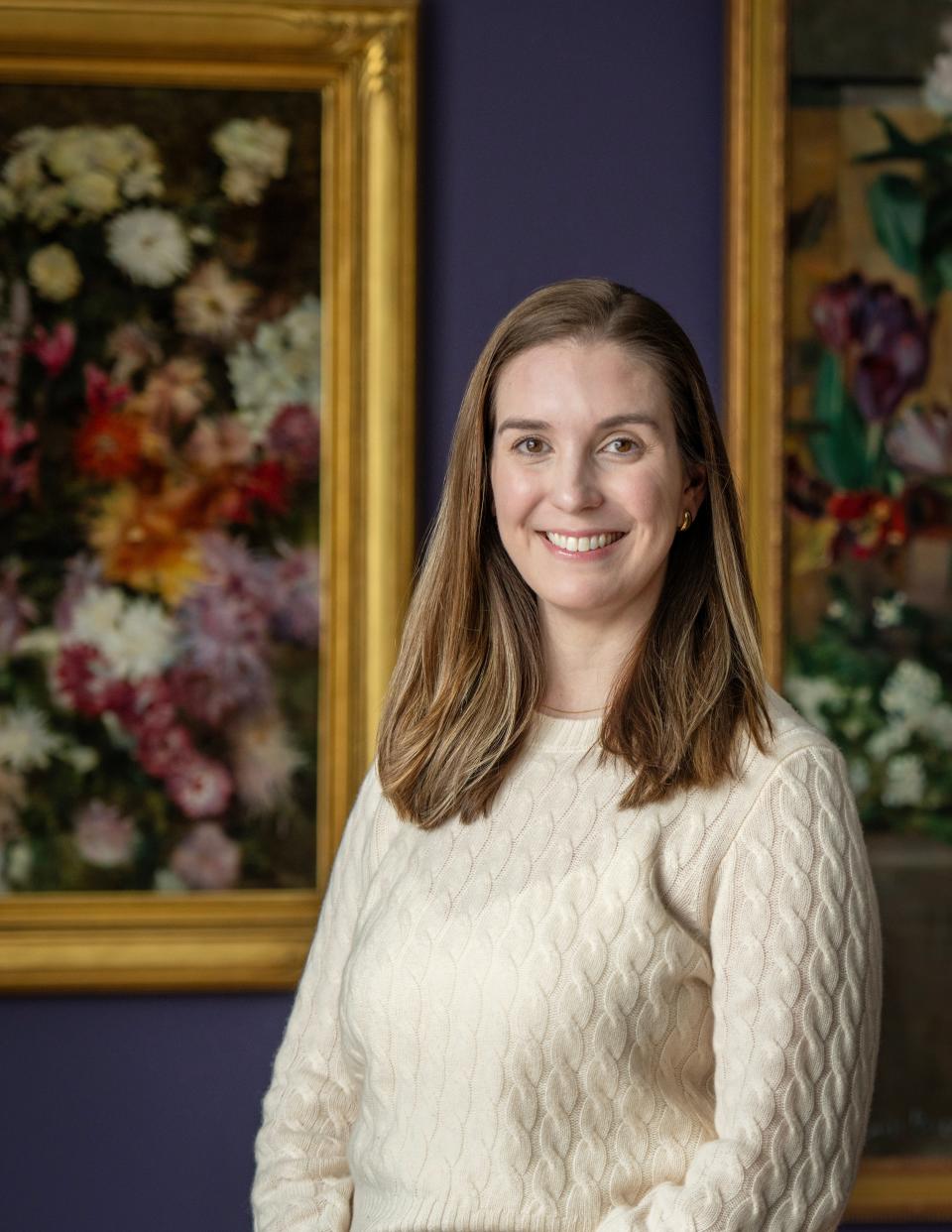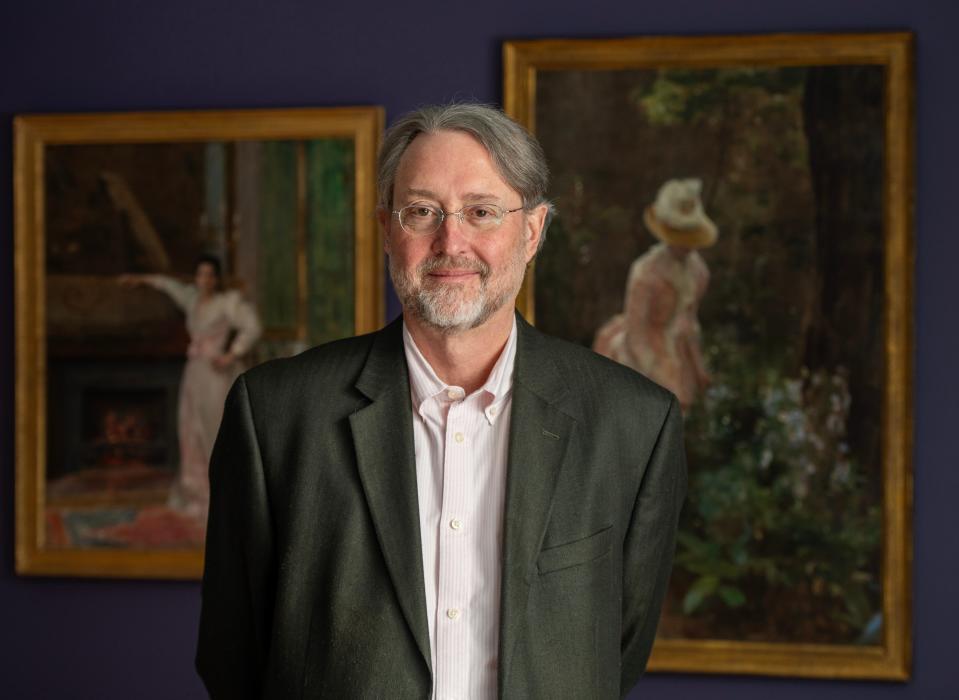New curator Emily Mazzola brings experience and enthusiasm to Fitchburg Art Museum

Style will meet art at Fitchburg Art Museum as its new curator, Emily Mazzola, takes the stage. With a newly minted Ph.D. from the department of art and architecture at the University of Pittsburgh, Mazzola hopes to fashion a career by seamlessly weaving her expertise in textiles and historical dress into the museum's exhibitions.
“I'm really hopeful that as part of my time here at FAM, that I'll be able to bring in some of my interests in textiles, historical dress and contemporary fashion into our galleries,” Mazzola said. “FAM has an incredible legacy of doing exceptional contemporary New England programming and of course I want to continue that legacy, but I also would like to incorporate some of the things that really I'm very excited about.”
With an eye for the intersection of contemporary art and clothing as material culture, Mazzola said she hopes those future fashion-and-clothing-based exhibitions will create a vibrant experience for visitors. Shows might range from highlighting the works of contemporary artists who use textiles in interesting and compelling ways to exploring the rich textile manufacturing history of the North Central region.
She believes that combining traditional art with fashion and textile items and ephemera can enliven the artworks and make the exhibition more engaging for visitors. It’s a way, she said, to use textiles to explore cultural memories, legacies and the objects of everyday life, encouraging visitors to think about their own lives in new ways.
“The Boston area and New England are home to some very interesting fashion artists and contemporary artists who use fashion as a sculptural medium, and I’m hopeful that I'll have an opportunity to bring those voices to our FAM audiences,” she said.

Bridging the gap
In London in 2018, Mazzola saw a small show at the London School of Fashion at the school's Fashion Space Gallery that presented the personal fashion archives of a fashion designer and a stylist. “The idea of creating an exhibition out of a personal fashion collection or archive has really stuck with me,” she said. “It would be incredible to collaborate with a New England collector.”
Beyond a passion for fashion, Mazzola’s academic background in American art with expertise in political portraiture and exhibition history also will inform future shows. She aims to bridge the gap between academic knowledge and museum exhibitions by presenting American art within its historical and cultural context, allowing visitors to gain a deeper understanding of the artworks and their significance.

Mazzola’s new position marks a return to FAM for her. She worked as the Koch Curatorial Fellow at the museum from 2015 to 2016, after earning a master’s degree in art history from the University of Connecticut in 2014. She received a bachelor’s degree from Skidmore College in 2011.
When the curator’s position opened at FAM, Mazzola had just completed her doctoral program at the University of Pittsburgh. There were many applicants for the position but Mazzola stood out for a variety of reasons, Nick Capasso, FAM director, said.
Her academic training as an American art historian is a perfect fit for one of the three focus areas of the museum's collection, which is American art. The museum has been actively working on showcasing its American art collection, and her expertise in this area is valuable for furthering that goal.
More: Hollywood spotlight: In 2013, the filming of 'American Hustle' took over Worcester
More: Last Call: Retired Worcester Tech principal enjoys career in teaching voice
“It helped that she had been here before because we knew her and we trusted her, so she already had that seal of approval,” he said. “Also, American art is one of the three focus areas of our collection. The other two are African art and photography, and we've been doing a lot with those two collections, but we'd really want to do more with our American collection.”
Additionally, Mazzola’s references mentioned that she had actively prepared herself for a curatorial career in a small regional art museum with an emphasis on community, like the Fitchburg Art Museum. This demonstrated her understanding and alignment with the museum's mission and approach to curatorial decision making, Capasso said. She had crafted her graduate school experience, including the courses she took and the fellowships she accepted, in ways that dovetailed with the curator job description. “Emily's previous experience at the museum, her academic training in American art, and her demonstrated passion for the museum's mission and approach made her a strong fit for the curator position,” he said.

Enthusiasm and expertise
As she returns to Fitchburg, Mazzola hopes her enthusiasm and expertise likely will make a lasting impact on the museum and its visitors. From exploring the legacies of female artists to delving into the world of political portraiture, Mazzola brings a unique viewpoint to the museum. Her understanding of exhibition history, American art, and fashion and textiles promises to add a distinctive perspective to the museum's approach to showcasing contemporary New England artists. But it was her serendipitous discovery of a little-known portraitist that led her to uncovering a little-known treasure trove of diaries and papers, shedding new light on the nexus of art and politics.
While she was doing her master’s thesis at the University of Connecticut, Mazzola’s adviser, art history professor Alexis Boylan, encouraged her interest in the art of Ellen Emmet Rand (1875-1941), a portraitist who was quite famous in her day but fell into relative obscurity after her death.
“I like to think of Ellen Emmet Rand as one of the most important female artists that you’ve never heard of before, in terms of the fact that if there was anybody in the 1920s, '30s, and '40s who was rich enough and famous enough to sit for her, they did,” Boylan told UConn Today, a university publication.
Mazzola originally planned to do in-depth research on three of Rand’s portraits but found was particularly struck by her portrait of Franklin D. Roosevelt. “She portrayed him in a way that honored how he understood his body, which when we're talking about FDR is, of course, complicated,” she said. “I found that really interesting and compelling and it sparked my interest in the connections between politics, art, and cultural institutions.”
After two months of research, Mazzola had a 60-page draft covering just the FDR painting. “I sent it to Alexis and said, ‘I think this might be my whole master's thesis,’ and she readily agreed.”
Mazzola had a chance through her research to connect with some of Rand’s relatives, and the artist’s namesake and granddaughter allowed her access to her grandmother’s letters, papers and diaries. “They held an incredible library of material related to Ellen, and they very generously allowed me to come into their home,” she said. Not long after, Mazzola’s research and connection to the family played a role in a major gift to the university of Rand’s diaries, photographs, letters and other memorabilia.
Rand also had been commissioned to do the official White House portrait of FDR. “Over the years that portrait got taken down, which is unusual when it comes to portraits in the White House collection,” Mazzola said. The story goes that it was taken out of the White House with Eleanor Roosevelt’s permission after FDR had died and as Harry Truman was sworn into office. “Truman decided he wanted a more somber portrait of FDR because he was coming into a situation where FDR had just died,” she said. “He wanted a different kind of memorial to FDR, which Eleanor agreed to.”
In addition to her knowledge of political portraiture, Mazzola’s expertise in exhibition design will get a chance to shine at FAM. She said through her studies and previous museum experience she learned that curators could lend meaning to an exhibition design by carefully selecting and arranging artworks and objects, considering the spatial layout and flow of the exhibition, and incorporating interpretive elements such as labels, text panels and multimedia presentations.
“Curators can create meaning by placing artworks or objects in a specific historical, cultural or thematic context,” she said. “For example, they might group together artworks from a particular time period or artistic movement to highlight connections and influences or to create a narrative or convey a specific message. They can arrange artworks in a chronological or thematic sequence to guide visitors through a story or concept.”
The placement of objects, lighting and the use of multimedia can enhance the narrative and engage visitors, she said, while contrasting styles, themes, or perspectives can spark conversations and encourage visitors to consider multiple viewpoints.
“Exhibition design can go beyond visual elements to engage other senses,” she said. “Curators may incorporate sound, scent or tactile experiences to enhance the visitor's understanding and connection to the artworks or objects.”
An example of the type of exhibition concepts Mazzola is interested in bringing to FAM was seen in a show of the work of edgy Dutch fashion designer Iris Van Herpen at Carnegie Museum of Art in Pittsburgh in the spring of 2017.
“Van Herpen is a fashion designer who uses technology like 3D printing and unusual materials such as resin and metal mesh to create clothes that are very futuristic-looking,” she said. “I am really interested in artists who use industrial or inventive materials that are outside of what we usually think of as garment textiles. Massachusetts is home to many technological innovators working in the textile space and I would love to see if we can find a way to bring fashion, art, science and technology together for our audiences.”
Mazzola also plans to incorporate audience participation as a way to draw the community into a show. “Curators can invite visitors to actively participate in the exhibition through interactive elements,” she said. “This could include hands-on activities, digital interactives or opportunities for visitors to contribute their own thoughts and responses.”
And Mazzola’s thoughts and response to returning to FAM?
“I wanted to come back to Fitchburg because I had such a fantastic experience here as a fellow,” she said. “I learned so much about what museums can do for their communities and about institutions in general. Coming back to Fitchburg was an incredible opportunity and in terms of timing it was perfect. I’m so happy to be back.”
This article originally appeared on Telegram & Gazette: A fresh vision: Emily Mazzola brings new ideas Fitchburg Art Museum

